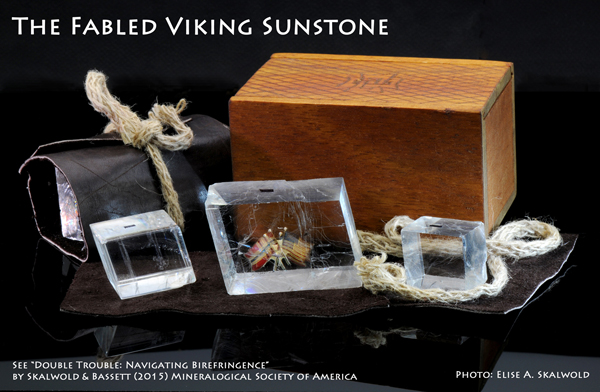[ Science/Technology ] [ Main Menu ]
6491

From: Captainj, [DNS_Address]
Subject: 500-Year-Old Astrolabe May be ‘Earliest Marine Navigation Tool’ Ever
URL: http://gcaptain.com/500-year-old-astrolabe-could-be-earliest-marine-navigation-tool-ever-discovered/
|
..Discovered Researchers at the University of Warwick have identified what is believed to be the earliest known marine navigation tool ever discovered. The artifact, now determined to be an astrolabe, was excavated in 2014 from the wreck of a Portuguese explorer ship which sank during a storm in the Indian Ocean in 1503. The ship was called the Esmeralda, part of a fleet led by Portuguese explorer Vasco da Gama, the first person to sail directly from Europe to India. The astrolabe is believed to date from between 1495 and 1500, which would make it the earliest known marine navigation tool ever discovered, according to the researchers. The tool would have been used by mariners to measure the altitude of the sun, helping them determine their location on the high seas. Although the 17.5cm diameter bronze disc was believed to be an astrolabe, it had no visible navigational markings – only engravings that have since been identified as Portuguese coat of arms and the personal emblem of Don Manuel I, the King of Portugal from 1495-1521. Professor Mark Williams from WMG, University of Warwick, was tasked with scanning the artifact using pioneering scanning analysis technology and 3D imaging, revealing tiny details invisible to the human eye. The scans showed etches around the edge of the object, each separated by five degrees – proving that it is, in fact, an astrolabe. “It was fantastic to apply our 3D scanning technology to such an exciting project and help with the identification of such a rare and fascinating item,” said Williams. “Usually we are working on engineering-related challenges, so to be able to take our expertise and transfer that to something totally different and so historically significant was a really interesting opportunity.” David Mearns, from Blue Water Recovery, who led the excavation, commented: “It’s a great privilege to find something so rare, something so historically important, something that will be studied by the archaeological community and fills in a gap. “It was like nothing else we had seen […] it adds to the history, and hopefully astrolabes from this period can be found.” |
6494

From: chatillion, [DNS_Address]
Subject: Add the Viking Sun Stone to the mix, too
URL: http://www.nordskip.com/presentations/VikingSunstone.pdf
|
See also: Legendary Viking Sunstone Navigation: Solved https://www.seeker.com/legendary-viking-sunstone-navigation-solved-1765489280.html |
Responses:
[6496]
6496
From: Captainj, [DNS_Address]
Subject: Re: Add the Viking Sun Stone to the mix, too
|
Ah Yes, The Viking Sun Stone! Truly amazing how people came up with all this stuff way back in the day!! Thanks Chatillion! |
Responses:
None
6492
From: Jody/Concord,CA, [DNS_Address]
Subject: Re: 500-Year-Old Astrolabe May be ‘Earliest Marine Navigation Tool’...
|
Here's an even older Astrolabe from the Ancient Greeks; The Antikythera Mechanism circa 82 B.C. found in 1902. This one baffles the mind and some think Archemedes made it! Thanks Captain J! Blessings, Jody |
6495

From: JTRIV, [DNS_Address]
Subject: Re: 500-Year-Old Astrolabe May be ‘Earliest Marine Navigation Tool’...
|
Hi Jody, I was just reading about the Antikythera shipwreck this morning as there have been new discoveries there including the bronze arm above. The Antikythera Mechanism wasn't for navigation but for tracking the movements of the Sun, moon and planets. See link above and video below. Cheers Jim |
Responses:
None
6493
From: Captainj, [DNS_Address]
Subject: Re: 500-Year-Old Astrolabe May be ‘Earliest Marine Navigation Tool’...
|
Your more than welcome Jody and thank you! Amazing that people came with stuff like that so long ago. Also mind boggling is the young ones nowadays can't grasp how to use a sextant... |
Responses:
None
[ Science/Technology ] [ Main Menu ]